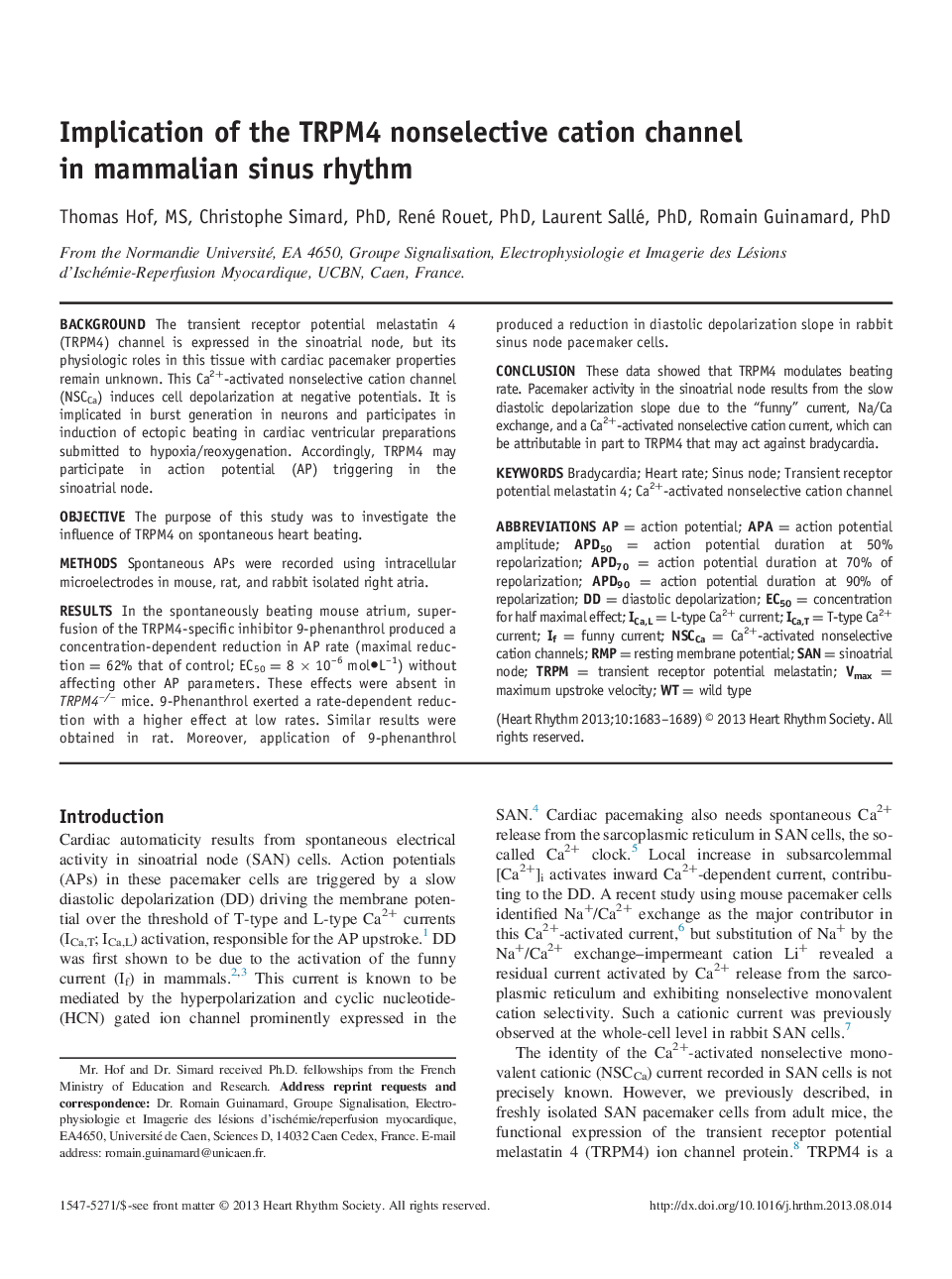| کد مقاله | کد نشریه | سال انتشار | مقاله انگلیسی | نسخه تمام متن |
|---|---|---|---|---|
| 2922113 | 1175835 | 2013 | 7 صفحه PDF | دانلود رایگان |

BackgroundThe transient receptor potential melastatin 4 (TRPM4) channel is expressed in the sinoatrial node, but its physiologic roles in this tissue with cardiac pacemaker properties remain unknown. This Ca2+-activated nonselective cation channel (NSCCa) induces cell depolarization at negative potentials. It is implicated in burst generation in neurons and participates in induction of ectopic beating in cardiac ventricular preparations submitted to hypoxia/reoxygenation. Accordingly, TRPM4 may participate in action potential (AP) triggering in the sinoatrial node.ObjectiveThe purpose of this study was to investigate the influence of TRPM4 on spontaneous heart beating.MethodsSpontaneous APs were recorded using intracellular microelectrodes in mouse, rat, and rabbit isolated right atria.ResultsIn the spontaneously beating mouse atrium, superfusion of the TRPM4-specific inhibitor 9-phenanthrol produced a concentration-dependent reduction in AP rate (maximal reduction = 62% that of control; EC50 = 8 × 10–6 mol●L–1) without affecting other AP parameters. These effects were absent in TRPM4–/– mice. 9-Phenanthrol exerted a rate-dependent reduction with a higher effect at low rates. Similar results were obtained in rat. Moreover, application of 9-phenanthrol produced a reduction in diastolic depolarization slope in rabbit sinus node pacemaker cells.ConclusionThese data showed that TRPM4 modulates beating rate. Pacemaker activity in the sinoatrial node results from the slow diastolic depolarization slope due to the “funny” current, Na/Ca exchange, and a Ca2+-activated nonselective cation current, which can be attributable in part to TRPM4 that may act against bradycardia.
Journal: Heart Rhythm - Volume 10, Issue 11, November 2013, Pages 1683–1689